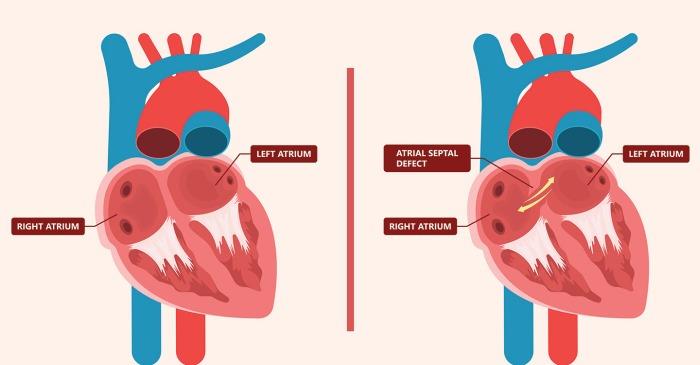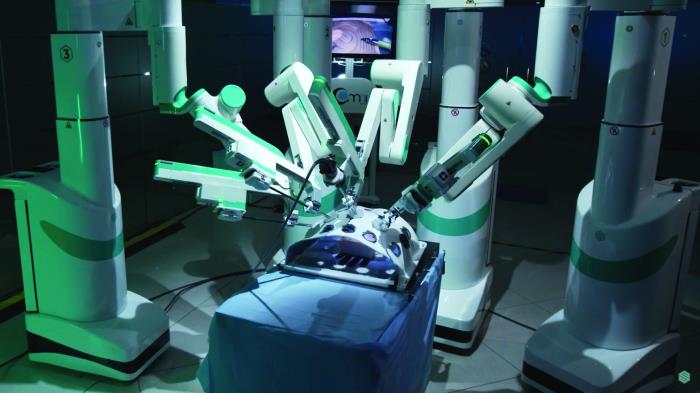Robotic-assisted surgery for Atrial Septal Defect (ASD) closure represents an advanced approach to heart surgery, combining precision robotic technology with the expertise of highly skilled surgeons. This minimally invasive technique allows for more accurate repairs of the heart’s septal wall while minimizing the trauma associated with traditional open surgery. The use of robotic systems in ASD closure enhances the surgeon’s ability to perform delicate procedures, leading to improved patient outcomes.
How Robotic-Assisted Surgery Works for ASD Closure
In robotic-assisted ASD closure, the surgeon controls robotic arms via a console, which provides enhanced control and precision during the procedure. Small incisions are made to insert robotic instruments, and the surgeon uses a 3D high-definition camera to visualize the heart's structures in great detail. This allows for a more precise placement of closure devices or sutures, reducing the risk of errors that can occur with traditional surgical methods.
Enhanced Precision and Accuracy in ASD Closure with Robotics
The precision of robotic-assisted surgery is one of its most significant advantages. The robotic system allows the surgeon to make micro-adjustments with exceptional accuracy, even in hard-to-reach areas of the heart. This level of control ensures that the ASD closure is performed with minimal disruption to surrounding tissues, leading to a more successful repair with reduced chances of complications such as leaks or device misplacement.

The Role of Minimally Invasive Techniques in Robotic Surgery
Minimally invasive techniques in robotic surgery are key to its effectiveness. Instead of performing open heart surgery, small, strategic incisions are made, through which robotic tools and cameras are inserted. This reduces the amount of tissue trauma, limits blood loss, and significantly lowers the risk of infection. Additionally, minimally invasive approaches allow for faster recovery and improved cosmetic outcomes, as the scars from smaller incisions are less noticeable.
Benefits of Smaller Incisions in Robotic-Assisted ASD Surgery
One of the key benefits of robotic-assisted ASD closure is the use of smaller incisions. Unlike traditional surgery, which may require a large incision to access the heart, robotic techniques involve just a few small cuts. These incisions result in less pain, reduced scarring, and a faster healing process. Patients often experience a more comfortable recovery, with minimal disruption to their daily activities post-surgery.
Faster Recovery Time and Shorter Hospital Stay with Robotic Surgery
Robotic-assisted ASD closure typically results in a much quicker recovery time compared to traditional open-heart surgery. With smaller incisions and less invasive procedures, patients tend to experience less pain and a lower risk of infection, allowing them to return to their normal activities more rapidly. Many patients also experience shorter hospital stays, as the need for extended post-operative care is reduced. This contributes to overall improved patient satisfaction and faster return to health.
Reduced Risk of Complications After Robotic-Assisted ASD Closure
The use of robotic-assisted surgery significantly reduces the risk of complications commonly associated with open-heart surgery, such as infection, excessive bleeding, and prolonged recovery. The precision of robotic tools minimizes the chances of surgical errors, such as misalignment or damage to surrounding tissues. This, in turn, leads to fewer post-operative complications, offering patients a safer and more effective surgical option for ASD closure.
Improved Visualization and Control During Surgery
Robotic-assisted surgery provides surgeons with enhanced visualization and control through high-definition cameras and robotic arms, allowing for greater precision and detailed access to the heart during ASD closure surgery. This improves surgical accuracy and reduces the likelihood of complications.
The Role of 3D Imaging in Robotic-Assisted ASD Closure Surgery
3D imaging in robotic-assisted surgery enables the surgical team to view a detailed, real-time, three-dimensional map of the heart, which helps in precisely locating and closing the ASD. This advanced imaging technology allows for more accurate assessments and better surgical planning.
Less Pain and Discomfort for Patients Post-Surgery
Robotic-assisted surgery typically requires smaller incisions, leading to less trauma to surrounding tissues. This results in reduced postoperative pain, faster recovery times, and a quicker return to daily activities compared to traditional open surgery methods.
Robotic Surgery and the Potential for Better Long-Term Outcomes
Studies suggest that robotic-assisted surgery for ASD closure may lead to better long-term outcomes, including reduced risk of infection, fewer complications, and less scarring. The enhanced precision offered by robotic systems can also improve the overall success rate of the procedure.

How Robotic-Assisted Surgery Improves Surgeons’ Efficiency
Robotic systems offer surgeons more flexibility and range of motion than traditional manual methods, allowing them to perform complex tasks with increased precision and control. This can shorten surgery time and reduce the risk of human error, improving the overall efficiency of the procedure.
The Role of Technology in Enhancing Patient Safety During ASD Surgery
Technology such as robotic arms, enhanced imaging, and real-time data integration improves patient safety by ensuring that the surgeon has the most accurate and up-to-date information during the procedure. This minimizes the risk of errors and enhances the success rate of the surgery.
How Robotic Surgery Helps in Complex ASD Closure Cases
In complex cases where the ASD is located in difficult-to-reach areas of the heart, robotic-assisted surgery provides greater dexterity and precision. Surgeons can access hard-to-reach regions with more control, which may be challenging with traditional methods.
Considerations: Is Robotic-Assisted Surgery Right for You?
While robotic-assisted surgery offers many benefits, it may not be suitable for every patient. Factors such as the location and size of the ASD, overall health condition, and the patient’s surgical history will influence whether robotic surgery is the best option. It’s essential to consult with a surgeon to determine the most appropriate approach.
Patient Testimonials: Success Stories with Robotic-Assisted ASD Closure
Many patients have shared positive experiences with robotic-assisted ASD closure surgery, highlighting less pain, faster recovery times, and improved outcomes. These testimonials provide valuable insights into the benefits and effectiveness of robotic surgery in treating ASD.
The Role of Blood Thinners After ASD Closure Surgery
Learn about how blood thinners are used after ASD closure surgery. Post-surgical anticoagulation therapy is often necessary to prevent blood clots, which can lead to complications. This article explains the role of blood thinners in recovery and how they help ensure a safe healing process following ASD closure surgery.
Exploring the Long-Term Health Monitoring for ASD Patients
Read about long-term health monitoring for ASD patients. After ASD closure, ongoing health monitoring is crucial to track heart function and detect any potential complications early. This article outlines the types of monitoring and follow-up care necessary to ensure long-term heart health after surgery.
Conclusion: The Future of ASD Closure Surgery with Robotics
The use of robotics in ASD closure surgery represents a significant advancement in the field, offering patients greater precision, faster recovery, and improved outcomes. As technology continues to evolve, robotic-assisted surgery is poised to become a standard approach in heart surgeries, including ASD closure.
Best ASD Closure Surgery in India
The Best ASD Closure Surgery in India is a procedure designed to close a hole in the heart’s atrial septum, improving blood flow and overall cardiac health in patients with atrial septal defects.
Best ASD Closure Surgery Hospitals in India
The best asd closure surgery hospitals in india provide advanced facilities and specialized cardiac teams, ensuring comprehensive care from initial assessment to post-surgical recovery.
ASD Closure Surgery Cost in India
The asd closure surgery cost in india is affordable and transparent, offering patients high-quality care and a range of options to suit their needs.
Best ASD Closure Surgeons in India
The Best ASD Closure Surgeons in India are experts in congenital heart procedures, providing personalized care and a high success rate for patients with atrial septal defects.
FAQ
How does robotic-assisted surgery differ from traditional ASD closure surgery?
Robotic-assisted surgery differs from traditional surgery in that it uses robotic arms controlled by the surgeon to perform the operation through smaller incisions, offering greater precision and a faster recovery.
What are the advantages of smaller incisions in robotic surgery?
Smaller incisions reduce tissue damage, leading to less pain, quicker healing, reduced scarring, and a lower risk of infection compared to traditional open surgeries.
Is robotic-assisted surgery suitable for all patients needing ASD closure?
Not all patients are candidates for robotic-assisted surgery. Suitability depends on factors such as the size and location of the ASD, the patient's overall health, and the complexity of the case.
What is the recovery time for robotic-assisted ASD closure surgery?
Patients typically experience a faster recovery with robotic-assisted surgery, often returning to normal activities within a few weeks, compared to the longer recovery times associated with traditional surgery.
Are there any risks associated with robotic-assisted surgery for ASD closure?
While robotic-assisted surgery is generally safe, risks include those associated with any surgery, such as infection, bleeding, or complications from anesthesia. However, the precision of the robotic system may help minimize these risks.